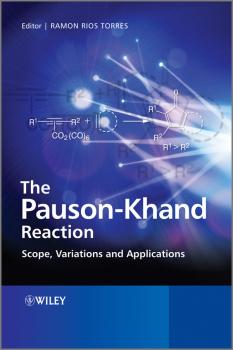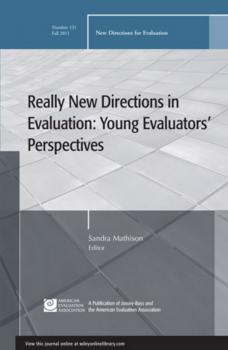Прочая образовательная литература
Различные книги в жанре Прочая образовательная литератураPhysik des Golfspiels. Mit Newton zum Tee
Ivan Egry ist Physiker und begeisterter Golfer ? er kennt nicht nur Begriffe wie >Handicap<, >Chippen<, >Hook< und >Slice< oder >Putten<, nein, er kann auch genau erklaren, wie alles physikalisch funktioniert. Mit Physik des Golfspiels hat er nun eine Lucke geschlossen und das erste deutschsprachige Sachbuch zum Thema geschrieben. Ob Ballflug oder Treffmoment ? alles erklart Egry verstandlich und mit so wenig Mathematik wie moglich und entmystifiziert, ganz nebenbei, auch noch den >perfekten< Golfschwung. OB FLUGBAHN ODER DAS SPRINGEN DES BALLS: HINTER ALLEM STECKT PHYSIK An dem brachial klingenden Rat >Wenn Du willst, dass der Ball weit fliegt, musst Du halt fest draufhauen< ist etwas dran, wenn man ihn richtig interpretiert. Richtig hei?t in diesem Fall: physikalisch. Denn auch das Golfspiel gehorcht den Gesetzen der Physik wie den Newton?schen Bewegungsgleichungen der klassischen Mechanik. ERST LESEN, DANN TRAINIEREN ? SONST GEHT DER SCHUSS NACH HINTEN LOS Ubrigens: Wer wahrend des Spiels zu viel daruber nachdenkt, wie es um seinen Golfschwung steht, der erlebt Paralyse durch Analyse ? denn Golf, so Egry, >lebt von der Anwendung automatisierter Ablaufe<. Erst lesen, dann viel trainieren und das Gelernte umsetzen. Golfer, die so an die Sache herangehen, werden auch ihre Leistungen steigern. Frisch auf also zum schwerkraftunterstutzten Chippen, optimalen Drive oder den Putts bei seitlichem Gefalle ? viel Freude und Erfolg dabei!
Emulsions, Foams, Suspensions, and Aerosols. Microscience and Applications
This is the first book to provide an integrated introduction to the nature, formation and occurrence, stability, propagation, and uses of the most common types of colloidal dispersion in the process-related industries. The primary focus is on the applications of the principles, paying attention to practical processes and problems. This is done both as part of the treatment of the fundamentals, where appropriate, and also in the separate sections devoted to specifi c kinds of industries. Throughout, the treatment is integrated, with the principles of colloid and interface science common to each dispersion type presented for each major physical property class, followed by separate treatments of features unique to emulsions, foams, or suspensions. The first half of the book introduces the fundamental principles, introducing readers to suspension formation and stability, characterization, and fl ow properties, emphasizing practical aspects throughout. The following chapters discuss a wide range of industrial applications and examples, serving to emphasize the diff erent methodologies that have been successfully applied. The author assumes no prior knowledge of colloid chemistry and, with its glossary of key terms, complete cross-referencing and indexing, this is a must-have for graduate and professional scientists and engineers who may encounter or use emulsions, foams, or suspensions, or combinations thereof, whether in process design, industrial production, or in related R&D fields.
Allgemeine Chemie. für Biochemiker Lebenswissenschaftler, Mediziner, Pharmazeuten...
Kompakt und >verdammt clever< auf den Punkt gebracht – so gelingt mit diesem klar strukturierten Lehrbuch der optimale Einstieg in die Grundlagen der Chemie. Nicht nur fur angehende Chemiker, Biochemiker und Chemieingenieure, sondern auch fur alle Studierenden der Lebenswissenschaften, Medizin und Pharmazie ist die allgemeine Chemie Voraussetzung fur das Verstehen von Sachverhalten benachbarter wissenschaftlicher Disziplinen. Mit dem Blick aufs Wesentliche gerichtet, sind alle prufungsrelevanten Lerninhalte wie der Aufbau des Periodensystems, Bindungskonzepte, Saure-Base und Redoxreaktionen und vieles mehr au?erst verstandlich erklart und abgedeckt. Dabei unterstutzen besondere Textelemente Ihren Lernerfolg: * Fur inhaltliche Orientierung sorgen optisch hervorgehobene Schlusselthemen am Kapitelanfang. * Das Wichtigste wird kurz und pragnant in Definitionen und Merksatzen zusammengefasst. * Beispiele helfen beim Anwenden des Lernstoffs. * Ideale Hilfe beim Nachschlagen von relevanten Stichworten und Begriffen bietet ein Glossar. * Wissenstest und Prufungsvorbereitung: Aufgaben mit Losungen helfen ungemein beim eigenstandigen Uberprufen des Gelernten.
The Pauson-Khand Reaction. Scope, Variations and Applications
The Pauson-Khand reaction is an important reaction in the field of organic chemistry. It involves the transition-metal catalysed cycloaddition of an alkyne, an alkene and carbon monoxide, to produce cyclopentenones. The importance of this reaction originates from its high value in transforming simple components into the synthetically useful cyclopentenone unit, in which a high degree of molecular complexity can be achieved in a single step, with impressive stereochemical and regiochemical control. The Pauson-Khand Reaction investigates the nature and many variations of this reaction. Topics covered include: the mechanisms of Pauson‐Khand-type reactions non chiral intramolecular and intermolecular versions of Pauson‐Khand reactions asymmetric Pauson‐Khand reaction using chiral auxiliaries the enantioselective Pauson‐Khand reaction Pauson‐Khand reactions catalysed by metals other than cobalt unconventional Pauson‐Khand reactions the Pauson‐Khand reaction in total synthesis Presenting a comprehensive overview of this fundamental reaction, The Pauson-Khand Reaction will find a place on the bookshelves of any organic or organometallic chemist.
Introduction to Industrial Polyethylene. Properties, Catalysts, and Processes
Demystifies the largest volume manmade synthetic polymer by distillingthe fundamentals of what polyethylene is, how it's made and processed,and what happens to it after its useful life is over. Endorsement for Introduction to Industrial Polyethylene «I found this to be a straightforward, easy-to-read, and useful introductory text on polyethylene, which will be helpful for chemists, engineers, and students who need to learn more about this complex topic. The author is a senior polyethylene specialist and I believe we can all benefit from his distillation of knowledge and insight to quickly grasp the key learnings.» —R.E. King III; Ciba Corporation (part of the BASF group) Jargon used in industrial polyethylene technology can often be bewildering to newcomers. Introduction to Industrial Polyethylene educates readers on terminology commonly used in the industry and demystifies the chemistry of catalysts and cocatalysts employed in the manufacture of polyethylene. This concise primer reviews the history of polyethylene and introduces basic features and nomenclatures for this versatile polymer. Catalysts and cocatalysts crucial to the production of polyethylene are discussed in the first few chapters. Latter chapters provide an introduction to the processes used to manufacture polyethylene and discuss matters related to downstream applications of polyethylene such as rheology, additives, environmental issues, etc. Providing industrial chemists and engineers a valuable reference tool that covers fundamental features of polyethylene technology, Introduction to Industrial Polyethylene: Identifies the fundamental types of polyethylene and how they differ. Lists markets, key fabrication methods, and the major producers of polyethylene. Provides biodegradable alternatives to polyethylene. Describes the processes used in the manufacture of polyethylene. Includes a thorough glossary, providing definitions of acronyms and abbreviations and also defines terms commonly used in discussions of production and properties of polyethylene. Concludes with the future of industrial polyethylene.
Protein Purification. Principles, High Resolution Methods, and Applications
The authoritative guide on protein purification—now completely updated and revised Since the Second Edition of Protein Purification was published in 1998, the sequencing of the human genome and other developments in bioscience have dramatically changed the landscape of protein research. This new edition addresses these developments, featuring a wealth of new topics and several chapters rewritten from scratch. Leading experts in the field cover all major biochemical separation methods for proteins in use today, providing professionals in biochemistry, organic chemistry, and analytical chemistry with quick access to the latest techniques. Entirely new or thoroughly revised content includes: High-resolution reversed-phase liquid chromatography Electrophoresis in gels Conventional isoelectric focusing in gel slabs and capillaries and immobilized pH gradients Affinity ligands from chemical and biological combinatorial libraries Membrane separations Refolding of inclusion body proteins from E. coli Purification of PEGylated proteins High throughput screening techniques in protein purification The history of protein chromatography
Transforming Youth Serving Organizations to Support Healthy Youth Development. New Directions for Youth Development, Number 139
This volume tells the story of major organizational change efforts at one municipal youth-serving organization to better support healthy youth development system wide. Presenting the viewpoints of young people, frontline staff, supervisors, managers, and the director, it reviews how the organization developed and transformed. Each article then describes the different strategies and tactics used to support organizational transformation. Learn: How a youth work professional development strategy ended up as an organizational development and change strategy How the partnership with a university expanded to include community-based research and evaluation to support youth program development and improvement within the organization. How youth advice structures can support high-quality youth programming and, by extension, improvements in organizational supports for quality youth programs How partnerships with other organizations supported ongoing adaptation of the organization to better address youth needs This is the 139th volume of New Directions for Youth Development, the Jossey-Bass quarterly report series dedicated to bringing together everyone concerned with helping young people, including scholars, practitioners, and people from different disciplines and professions.
Reframing Retention Strategy for Institutional Improvement. New Directions for Higher Education, Number 161
Take an in-depth look at the difficulty in gaining traction at the institutional level in improving student retention and degree completion rates—especially at larger four year institutions where size, complexity, and multiplicity of structures and processes present particular challenges. This volume offers a way for institutional leaders to better focus their time, energy, and resources in their retention effort by framing the way they think about it using the 4 Ps of retention strategy: profile, progress, process, and promise. This simple framework challenges long-standing, traditional assumptions about student retention that can distract and dilute institutional efforts, and helps keep those efforts sharply and singularly focused on improving retention and degree completion outcomes. This is the 161st volume of this Jossey-Bass series. Addressed to higher education decision makers on all kinds of campuses, New Directions for Higher Education provides timely information and authoritative advice about major issues and administrative problems confronting every institution.
Really New Directions in Evaluation: Young Evaluators' Perspectives. New Directions for Evaluation, Number 131
This issue of New Directions for Evaluation (NDE) marks a milestone: the 25th anniversary of the American Evaluation Association (AEA). NDE is an official publication of AEA and has been a crucial means for the Association to foster and promote the professionalization of evaluation through thematic discussions of theory and practice in evaluation. NDE was first published in 1978 under the name New Directions for Program Evaluation, although the title became New Directions for Evaluation in 1995 in acknowledgement of the broader scope of evaluation.
Presidents and Analysts Discuss Contemporary Challenges. New Directions for Community Colleges, Number 156
Since their inception, America’s community colleges have undergone continuous change. They must, because their mission is to provide learning vital for those who face local as well as global transformations, and that requires vigilant, vigorous commitment. This volume contains insights from men and women who have led the thinking and practice in these colleges to current historical heights. They were asked to forecast solutions to today's most critical problems as well as to identify opportunities that will likely engage tomorrow's community college leaders. In addition, a prevailing university authority was asked to review the support system traditionally relied upon to provide expertise to faculty and administrators. «Presidents and Analysts Discuss Contemporary Issues» collects decades of experience from extraordinary leaders and places that wisdom in readers' hands. This is the 156th volume of this Jossey-Bass quarterly report series. Essential to the professional libraries of presidents, vice presidents, deans, and other leaders in today's open-door institutions, New Directions for Community Colleges provides expert guidance in meeting the challenges of their distinctive and expanding educational mission.









